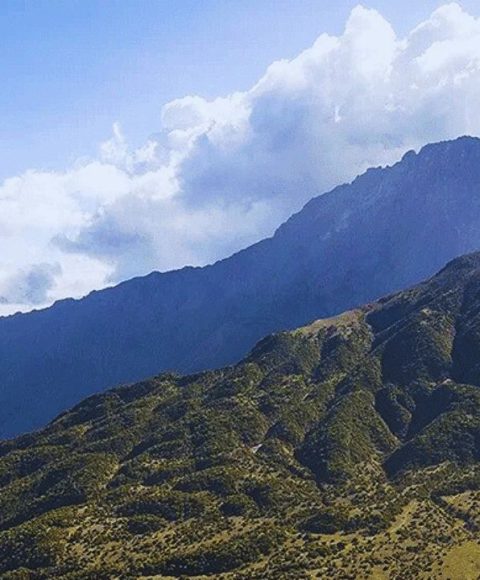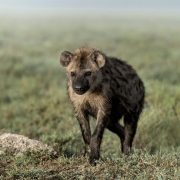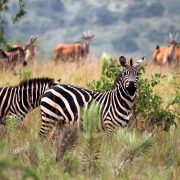Arusha National Park is a compact yet captivating gem located just 40 minutes from Arusha city. Spanning approximately 137 square kilometers, the park offers a stunning variety of ecosystems—from montane forests and crater lakes to alpine meadows and the snow-capped peak of Mount Meru
Arusha National Park is one of Tanzania’s most underrated safari destinations. Despite its modest size, it boasts remarkable ecological diversity. From hiking through lush forests filled with black-and-white colobus monkeys to canoeing on the serene Momella Lakes, Arusha offers an intimate and active safari experience away from the typical crowds.
The park’s backdrop is dominated by Mount Meru, Tanzania’s second-highest peak and a challenging trekking alternative to Kilimanjaro. With its proximity to Kilimanjaro International Airport and Arusha city, this park is a perfect introduction to Tanzania’s wild beauty.
A vast grassland dotted with spreading acacias and rocky outcrops. Thousands of wildebeest, zebra and other plains game as far as the eye can see. Predators stalk prey on the endless plains, singling out the young, the weak and the slow; the Serengeti delivers a quintessentially African safari experience.
137 km²
60+
All year round
Yes – Mount Meru & Biodiversity
Mount Meru & Colobus Monkeys

A forested volcanic caldera home to warthogs, buffaloes, and baboons. Scenic viewpoints along the rim offer panoramic vistas into the lush crater floor.

These thick forests host black-and-white colobus monkeys, blue monkeys, turacos, and hornbills. The cool, misty atmosphere is ideal for walking safaris and birdwatching.

A chain of alkaline and freshwater lakes where flamingos, hippos, and waterbirds thrive. Canoeing safaris on these lakes offer a unique, peaceful wildlife viewing experience.

The foothills of Mount Meru are cloaked in lush vegetation and alpine meadows. Higher up, the landscapes transform into moorlands and rocky ridges—ideal for trekking.
Though Arusha National Park lacks large predators like lions or cheetahs, it compensates with unique wildlife and birdlife. Giraffes roam freely across the open plains, buffaloes graze in the Ngurdoto Crater, and troops of baboons and monkeys swing through the forest canopy. Waterbucks, bushbucks, zebras, and warthogs are frequently seen.
The park is a birdwatcher’s haven with over 400 species recorded. These include flamingos, African fish eagles, silvery-cheeked hornbills, turacos, and crowned cranes. The tranquil lakes and forests offer excellent vantage points for bird photography.





The park’s climate is generally mild and temperate due to its elevation. The dry season (June to October) offers clear skies and better visibility for hiking and game drives. The wet seasons (March–May and November–December) bring lush greenery, full waterfalls, and peak bird activity, though trails may be slippery.
June to October & Mid-December to February
March to May & November to early December
Arusha National Park is located in northern Tanzania, just 29 km from Arusha city and about 60 km from Kilimanjaro International Airport (JRO). It lies between Mount Kilimanjaro and Mount Meru, making it an accessible day trip or multi-day destination.
The park covers 137 square kilometers. Though small by African standards, it offers one of the most diverse ecological ranges in a compact space—from montane rainforests to alpine highlands.
Arusha is best known for Mount Meru, black-and-white colobus monkeys, Momella Lakes, and Ngurdoto Crater. Its diversity of landscapes and the availability of walking and canoe safaris make it a unique experience.
Expect to see giraffes, buffaloes, zebras, warthogs, waterbucks, bushbucks, blue monkeys, baboons, and colobus monkeys. While large predators are absent, leopards are occasionally spotted.
Yes. It is a secure and well-managed park. Walking and canoeing safaris are guided by armed rangers. As with all wilderness areas, follow your guide’s instructions for safety.
You can visit year-round. The dry season (June–October) is best for hiking and general wildlife viewing. The wet season (March–May, November) is ideal for lush scenery and birdwatching.
Activities include game drives, guided walking safaris, canoeing on the Momella Lakes, and trekking Mount Meru. Picnicking at scenic viewpoints is also popular.
From Arusha city, it’s a 40-minute drive. Kilimanjaro International Airport is about an hour away. Most safari operators include Arusha NP as a first or last stop on a Northern Circuit itinerary.
Wear layered, breathable clothing, comfortable walking shoes, a hat, sunscreen, and insect repellent. For hiking or trekking Meru, bring warm clothing and rain protection.
Yes. Options include Hatari Lodge, Ngare Sero Mountain Lodge, Rivertrees Country Inn, and various hotels in Arusha city. Camping is also permitted in designated areas inside the park.
Absolutely. Mount Meru is less crowded, cheaper, and equally scenic. The 3-4 day trek offers wildlife on the lower slopes, alpine scenery, and panoramic views of Kilimanjaro from the summit.
It’s considered moderately challenging. The ascent involves steep sections and high altitudes but is manageable for those with good fitness. Acclimatization is easier than Kilimanjaro.
Yes. All treks require a registered park guide and an armed ranger, as wildlife encounters are common on the lower slopes.
Expect to see giraffes, colobus monkeys, buffaloes, bushbucks, and occasionally elephants in the lower forests. Birds like Hartlaub’s turaco and mountain buzzards inhabit the highlands.
Yes. Guided walking safaris are a major attraction. Walk through forested trails or open plains while spotting giraffes, buffaloes, and monkeys—an intimate experience unavailable in many larger parks.
Canoeing on Momella Lakes is seasonal and depends on water levels, but it’s often available throughout the year. It’s a tranquil, low-impact way to explore the lakeside wildlife and birds.
You can visit in a single day from Arusha, but a 1–2 night stay allows for deeper exploration, especially if you plan to hike, walk, or canoe.
Yes. Arusha NP pairs well with Tarangire, Lake Manyara, Ngorongoro, and Serengeti on Northern Circuit safaris. It’s also a great pre- or post-trek destination for Kilimanjaro climbers.
Its combination of walking safaris, alpine trekking, colobus monkey sightings, and crater-and-lake ecosystems is unmatched in Tanzania. No other park offers such varied experiences in such a small area.
Yes. With its accessible terrain, moderate safari pace, and variety of short activities, it’s ideal for families, older travelers, and those with limited time.
Planet Lodge Arusha is a charming eco-lodge nestled within lush tropical gardens in the quiet
Located in the heart of downtown Arusha, Four Points by Sheraton Arusha (formerly The Arusha
Gran Meliá Arusha is a luxurious five-star hotel set against the breathtaking backdrop of Mount

Explore Trekking Adventure (ETA) offers expertly guided treks, authentic cultural experiences, and responsible travel. With local knowledge, quality gear, and personalized service, ETA ensures safe, unforgettable journeys across East Africa.